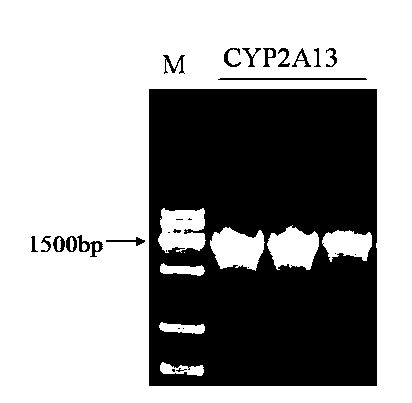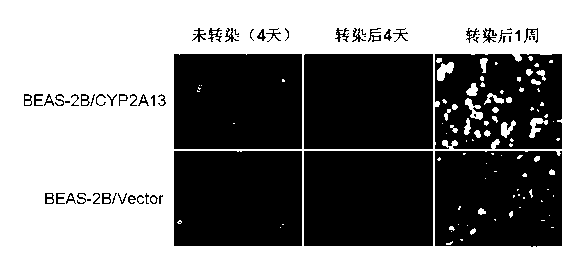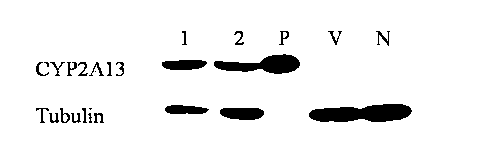Human lung cell BEAS-2B/CYP2A13, and preparation method and application thereof
A BEAS-2B, CYP2A13 technology, applied in the field of human recombinant gene lung epithelial cells, can solve the problems of unstable expression of the target protein, time-consuming and laborious, low success rate, etc., and achieve stable expression, high transfection efficiency, and responsive effects.
- Summary
- Abstract
- Description
- Claims
- Application Information
AI Technical Summary
Problems solved by technology
Method used
Image
Examples
Embodiment 1
[0035] 1. Construction and verification of pLJM1-GFP-CYP2A13 plasmid
[0036] The lentiviral plasmid pLJM1-GFP-CYPs containing the target CYP gene was constructed by endonuclease double digestion and enzyme ligation, which is the pFastBac existing in our laboratory. TMThe 1-CYP2A13 plasmid and the lentivirus-specific empty plasmid pLJM1-GFP were digested at the same time, and the digested products were recovered and enzyme-ligated respectively, and then transformed into DH5α competent cells, screened by ampicillin, and positive clones were picked to extract recombinant plasmids. Recombinant plasmids were verified by PCR using specific primers for each gene.
[0037] 2. Lentiviral vector packaging and infection of BEAS-2B cells
[0038] Transfer 293T cells to a 60mm culture dish, and transfect when the cell density reaches 80-90% confluence. Prepare the liposome transfection complex: DMEM (serum-free, double-antibody-free), the complex for transfection per dish contains 6 μg ...
Embodiment 2
[0048] 1. Dose-dependent application research on the effect of cells on AFB1
[0049] Using the BEAS-2B / CYP2A13 cells obtained in Example 1, and using the empty cell BEAS-2B / Vector as a control, the cells were given 0, 10, 100, 1000 and 10,000 nM of AFB1, treated for 24 hours, and then detected by the MTT method Cell viability under different doses of treatment, evaluate the toxic effect of cells under different doses of AFB1 treatment, and construct the dose-effect relationship.
[0050] 2. Time-dependent application research on the effect of cells on AFB1
[0051] Using the BEAS-2B / CYP2A13 cells obtained in Example 1, and using the empty cell BEAS-2B / Vector as a control, the cells were treated with 100 nM AFB1 for 24, 48 and 72 hours, and then the MTT method was used to detect the CYP2A13 cells treated at each time point. Cell viability, evaluate the toxic effect of cells under different time of AFB1 treatment, and construct the time-effect relationship.
[0052] Results:...
PUM
 Login to View More
Login to View More Abstract
Description
Claims
Application Information
 Login to View More
Login to View More - R&D
- Intellectual Property
- Life Sciences
- Materials
- Tech Scout
- Unparalleled Data Quality
- Higher Quality Content
- 60% Fewer Hallucinations
Browse by: Latest US Patents, China's latest patents, Technical Efficacy Thesaurus, Application Domain, Technology Topic, Popular Technical Reports.
© 2025 PatSnap. All rights reserved.Legal|Privacy policy|Modern Slavery Act Transparency Statement|Sitemap|About US| Contact US: help@patsnap.com



